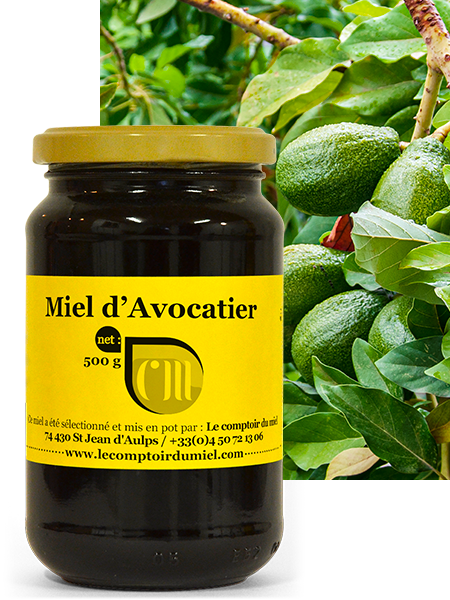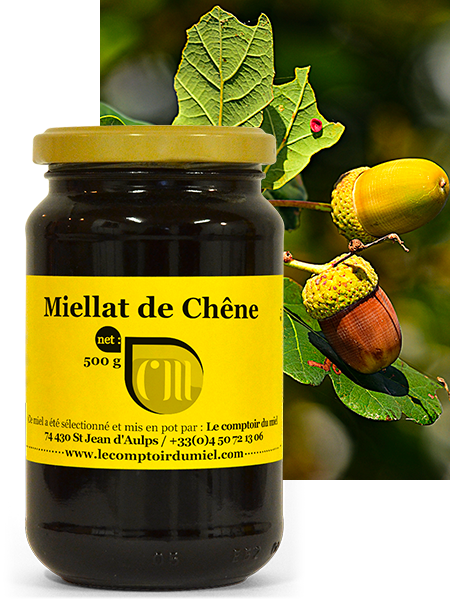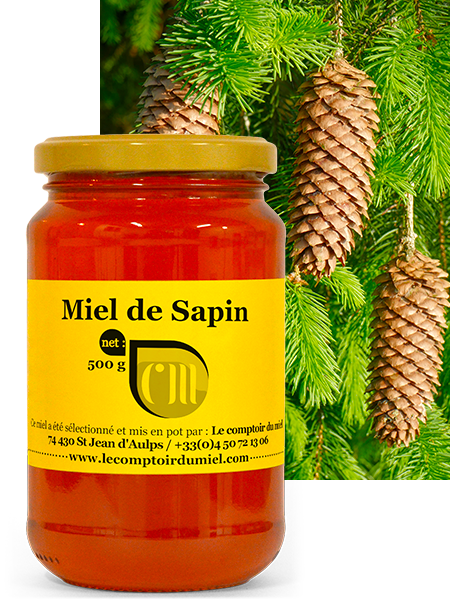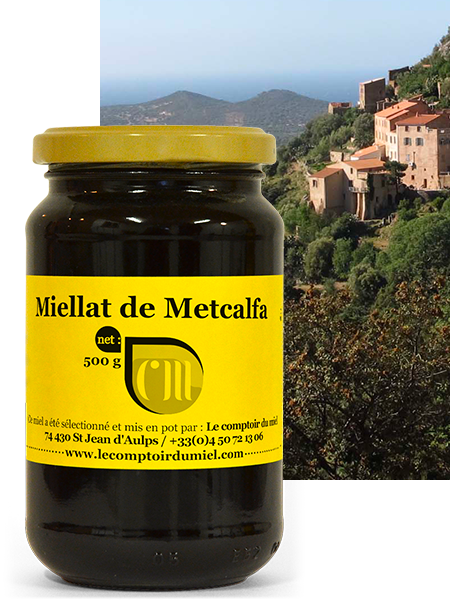Where our avocado honey is harvested:
The avocado tree is native to Mexico. It is a tree that can sometimes reach twenty meters whose fruit is rich in lipids but also in vitamins C, E and K
Our avocado honey is harvested in an unspoilt natural environment in Spain. Its production helps maintain an ecosystem rich in exceptional biodiversity.
Taste and preservation of avocado honey:
Avocado honey is black in color. It is very dense and thanks to its high fructose contentcontent, it will remain liquid for a long time. Its characteristic odor is strong and gripping. Its taste is powerful and oily. It is reminiscent of avocado fruit. Like many other honeys, it has an excellent shelf life!
The benefits of avocado :
Several parts of the avocado are used in phytotherapy: the leaves and bark cure digestive disorders and sore throats.
Its fruit also has many medicinal virtues. In Guatemala, avocado pulp is used to promote hair growth, as it is reputed to contain keratin. In cosmetics, avocado oil and pulp are used to moisturize and revitalize hair. Avocados are renowned for their various amino acids and multiple vitamins, including vitamin E, which fights free radicals.
Like all honeydewhoney is rich in trace elements and tannin. Which is excellent for our arteries! The vitamin K contained in the avocado tree makes this honey particularly interesting. Vitamin K contributes to bone calcification, thus preventing osteoporosis.
Using avocado honey:
Avocado honey, with its dark black color and fine crystallization, remains liquid for a very long time. This, combined with its intense flavor, makes it an excellent culinary complement:
At cookingIts texture and flavor are ideal for deglazing certain meats, but also fish which, combined with lemon, will go wonderfully well with our avocado honey.
You can also use this honey in a marinade to caramelize the ingredients of sweet and savory recipes.
Did you know?
Avocado leaf is toxic in high doses.
There are several types of avocado tree: the group A avocado tree and the group B avocado tree, which corresponds to a female and a male tree.



